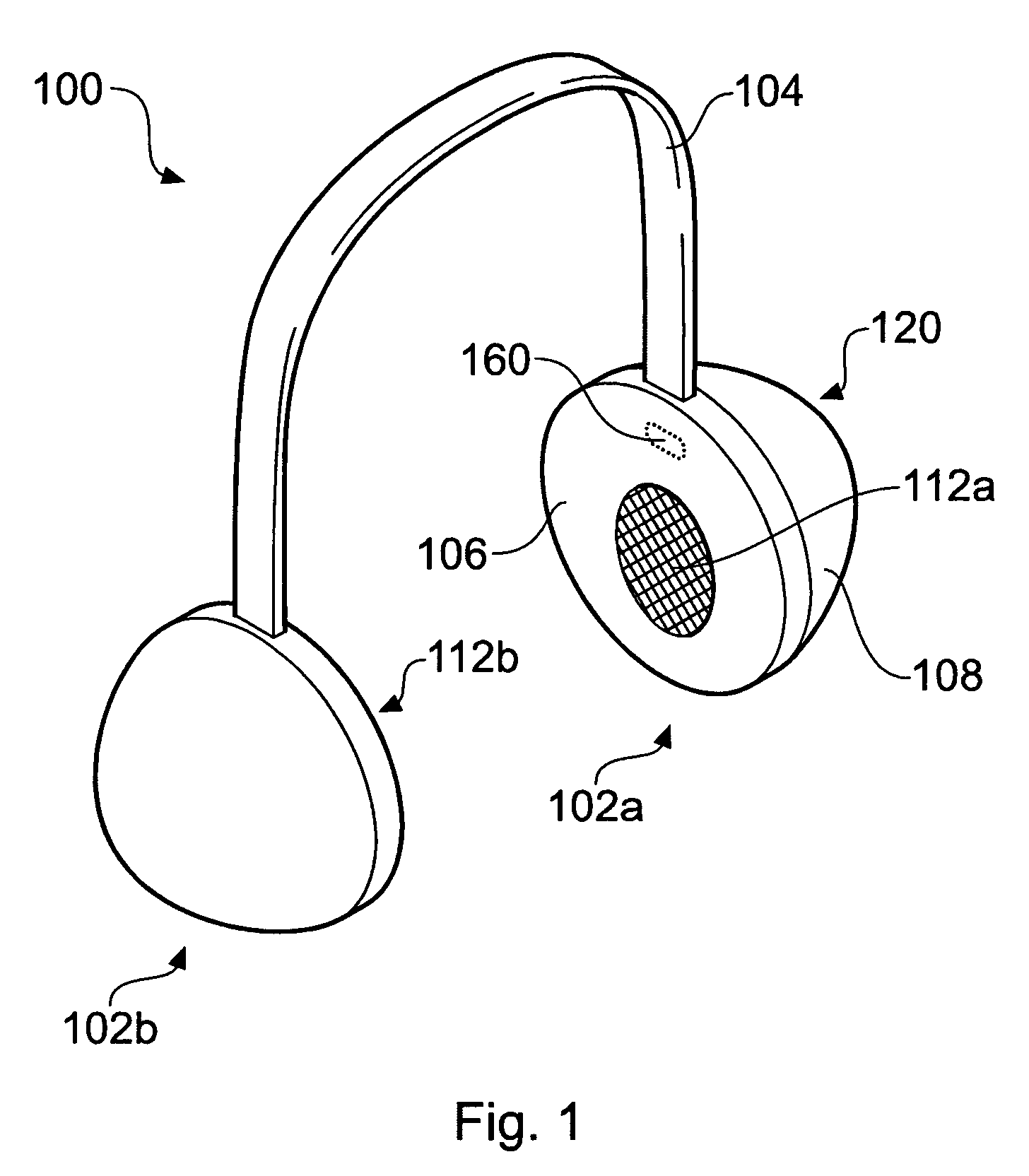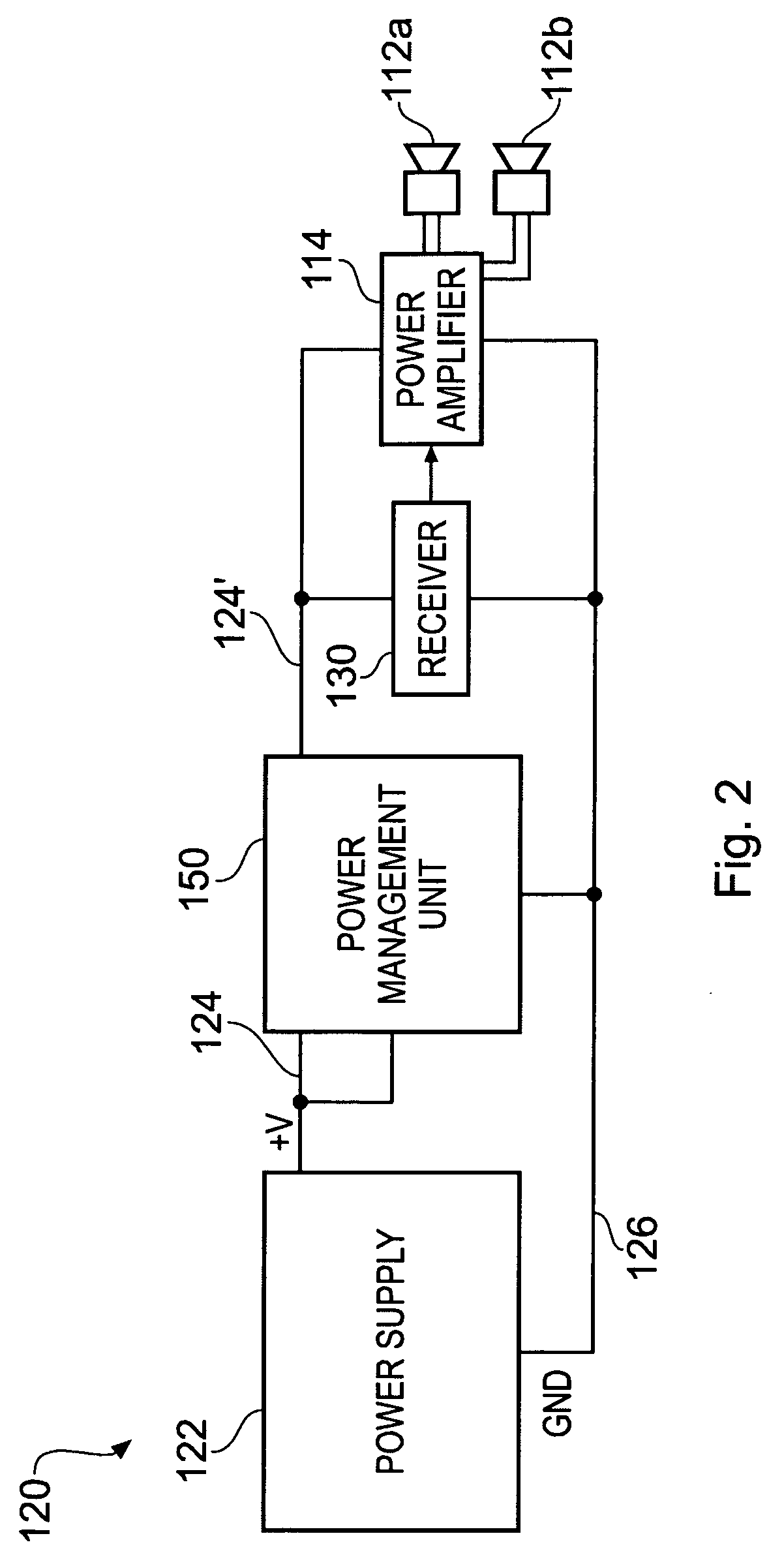Headset power management
a headband switch and power management technology, applied in the field of headband power management, can solve the problems of long-term reliability problems, large volume of mechanical headband switch, and inability to transfer mechanical headband switch approaches to non-headband based headsets such as single-ear devices, and achieve the effect of reducing power consumption
- Summary
- Abstract
- Description
- Claims
- Application Information
AI Technical Summary
Benefits of technology
Problems solved by technology
Method used
Image
Examples
Embodiment Construction
[0047]FIG. 1 shows a schematic diagram of an energy saving headset 100. The headset 100 comprises first and second casings 102a and 102b housing respective loudspeakers 112a and 112b for reproducing stereo sound. The casings 102a and 102b are physically connected together by a headband 104 that comprises a recess for housing electrical cabling (not shown) which connects the loudspeaker 112b in the second casing 102b to headset electronics 120 housed in the first casing 102a.
[0048]The casings 102a and 102b are formed of an outer casing cover 108 and an inner cover 106 that contacts a user's ear when the headset 100 is being worn. The casing cover 108 may be used to mount various user operable controls (not shown), such as, for example, volume controls, channel controls etc. The cover 106 can be provided over padding for user comfort and be made from various materials, including, for example, a flexible water-resistant polymeric sheet material. An opening in the cover 106 exposes the...
PUM
 Login to View More
Login to View More Abstract
Description
Claims
Application Information
 Login to View More
Login to View More - R&D
- Intellectual Property
- Life Sciences
- Materials
- Tech Scout
- Unparalleled Data Quality
- Higher Quality Content
- 60% Fewer Hallucinations
Browse by: Latest US Patents, China's latest patents, Technical Efficacy Thesaurus, Application Domain, Technology Topic, Popular Technical Reports.
© 2025 PatSnap. All rights reserved.Legal|Privacy policy|Modern Slavery Act Transparency Statement|Sitemap|About US| Contact US: help@patsnap.com



